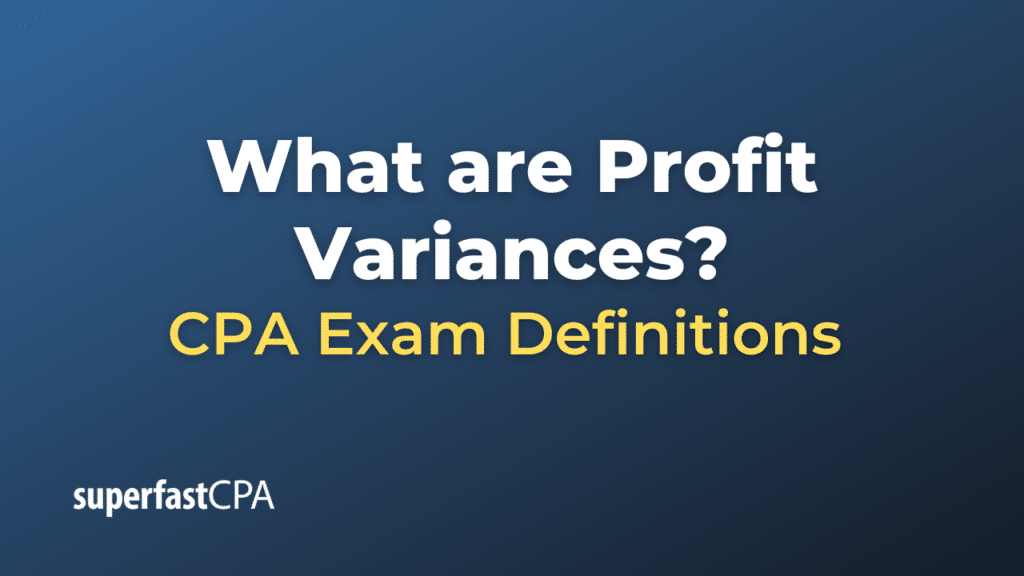Profit Variances
Profit variances refer to the differences between the actual profits that a company earns and the profits that it had planned or budgeted for. These variances can be analyzed to understand the performance of a business and to identify areas where the business performance did not meet expectations.
There are several types of profit variances that can be analyzed, depending on what aspect of profit you’re looking at. Some common ones include:
- Sales Variance: This is the difference between the actual revenue earned and the projected or budgeted revenue. A positive sales variance means that revenue was higher than expected, while a negative sales variance means that revenue was lower than expected.
- Cost Variance: This is the difference between actual and expected costs. A positive cost variance means costs were lower than expected, leading to higher profit, while a negative cost variance means costs were higher than expected, leading to lower profit.
- Volume Variance: This looks at the difference between the expected profit based on the actual volume of sales and the expected profit based on the budgeted volume of sales. If the company sells more units than planned, the volume variance would be positive, and if the company sells fewer units than planned, the volume variance would be negative.
- Price Variance: This measures the difference between the actual selling price and the budgeted selling price. If the company can sell its product for a higher price than planned, the price variance is positive, if it sells for a lower price, the variance is negative.
Analyzing profit variances can help a business identify areas where it’s performing well and areas where it could improve. It can also be a useful tool for forecasting and planning future business activities.
Example of Profit Variances
Let’s consider a simple example. Suppose there’s a company called “GoodGrains Inc.” that produces and sells organic grains. At the beginning of the year, they budgeted for the following:
- Sales volume: 10,000 units
- Sales price per unit: $20
- Total Revenue: $200,000
- Cost per unit: $10
- Total Costs: $100,000
- Expected Profit: $100,000
By the end of the year, they ended up with:
- Actual sales volume: 12,000 units
- Actual sales price per unit: $18
- Total Actual Revenue: $216,000
- Actual cost per unit: $11
- Total Actual Costs: $132,000
- Actual Profit: $84,000
Let’s analyze the variances:
- Sales Volume Variance: The actual volume sold was 2,000 units higher than expected. This would be considered a positive volume variance.
- Sales Price Variance: The actual selling price was $2 less per unit than expected. This would be considered a negative price variance.
- Cost Variance: The actual cost per unit was $1 more than expected. This would be a negative cost variance, as it reduced the profit.
- Profit Variance: The actual profit was $16,000 less than expected. This would be a negative profit variance.
By doing this analysis, GoodGrains Inc. can see that while they sold more units than expected, their lower selling price and higher costs contributed to a lower-than-expected profit. With this information, they might decide to focus on strategies to increase their selling price or reduce their costs in the future.













